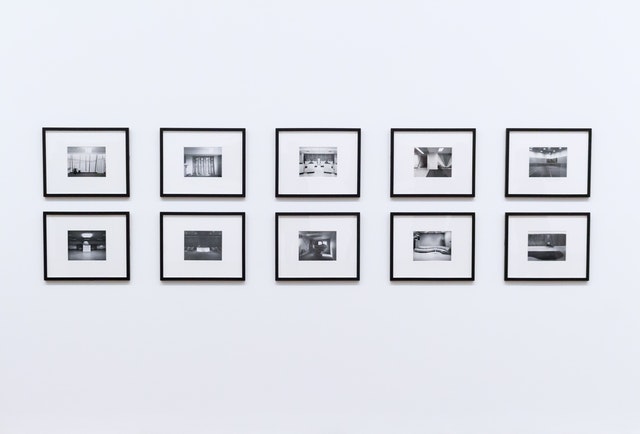Young Digital Artists Anxious About… Tech
Digital artwork at Sotheby’s? The auction house is famous for selling canvases from Andy Warhol and Jean-Michel Basquiat for $100 million-plus compared to revealing what many collectors still respect as ephemera.
Nevertheless the Sotheby’s S2 gallery at New York, commonly utilized for exhibitions of modern art, is now the site of a series featuring mostly young musicians that rely on electronic technologies and that aren’t exactly household names. Surprisingly, the majority of the works on perspective take bodily form. More important, they also betray a wide generational anxiety concerning the technological future and the use of people in it.
 The catalyst for the series was a curious-looking sculpture tucked off from the Art + Tech Laboratory in the Los Angeles County Museum of Art, created with advice from IT consulting companies and services.
The catalyst for the series was a curious-looking sculpture tucked off from the Art + Tech Laboratory in the Los Angeles County Museum of Art, created with advice from IT consulting companies and services.
A slick, black plinth with a black screen in front along with also a record player perched incongruously on top, it had been created as a prototype for a 21st-century memorial. After David Goodman, the Sotheby’s executive in charge of advertising and electronic development, watched it a couple of weeks past, its screen was showing the societal networking articles of a 25-year-old Miami bicycle enthusiast who’d been killed in a roadside hit. A plastic record played synthesized chimes, their tone decided by means of a computer analysis of those emotions those articles expressed – a significant key if they had been optimistic ones, a slight key when damaging.
Mr. Goodman remembered recently in his office in Sotheby’s headquarters in New York that he had been pretty blown away. Additionally, he said it made him unhappy – that it struck an emotional chord.
The Sculpture, “Monument I,” was created for a series about the Hereafter Institute, a literary organization that now lives only on line. It succeeds to organize, which is not in terms of the typically thought-of cloud computing, an electronic afterlife because of its “customers” – maintaining their internet presence and, through virtual reality, even the memory of the bodily presence. On its site, the institute welcomes visitors with such deadpan sales pitches as, “What will departure mean when our electronic spirits outlive our physical bodies?”
Actually, magician and palaces equally were the job of Gabriel Barcia-Colombo, a 35-year-old New York performer and instructor in New York University’s Interactive Telecommunications App. Working with a grant in Lacma, ‘Mr. Barcia-Colombo devised the magician as a method of exploring through agile test management the principles of death in the digital era.
 Now, at Mr. Goodman’s invitation, he’s curated the digital art exhibition in Sotheby’s. The young artists at the series – many I.T.P alumni one of them – often talk about, despite their focus in electronic technologies, a deep ambivalence about where it’s taking us. They also appear to explain the “Black Mirror” sensibility supporting the Hereafter Institute: The understanding, endemic to the satirical British TV show, that technologies has led us into an electronic fun home where nothing is as it seems and everything is because we fear it may be.
Now, at Mr. Goodman’s invitation, he’s curated the digital art exhibition in Sotheby’s. The young artists at the series – many I.T.P alumni one of them – often talk about, despite their focus in electronic technologies, a deep ambivalence about where it’s taking us. They also appear to explain the “Black Mirror” sensibility supporting the Hereafter Institute: The understanding, endemic to the satirical British TV show, that technologies has led us into an electronic fun home where nothing is as it seems and everything is because we fear it may be.
The series at Sotheby’s, known as “Bunker,” runs through Aug. 10. It features Jeremy Bailey, a Toronto artist who combines Snapchat with art history, depicting people through augmented reality lens in resemblance to famous portraits. An electronic C-print of his spouse as she stares in a pill that seems to be coming into life remembers Dante Gabriel Rossetti’s “Lady Lilith” gazing into a mirror.
It is the concept of looking at oneself through the entire tech of the day, Mr. Bailey stated by telephone. Made possible through agile automated testing, an adjoining self-portrait reveals him at the guise of the character he’s embraced – that of an obnoxiously ebullient naïf who proclaims himself a famed brand new media artist. Mr. Bailey said his alter ego believes profoundly that technology will help, and yet technology always lets him down.
Elsewhere in the series, you can overlook a virtual reality headset to browse the childhood home of Sarah Rothberg, who rebuilt her experience growing up in Los Angeles from older photographs and home movies. Or see lacy, metallic sculptures from Ashley Zelinskie – self-portraits whose surfaces comprise of the letters which spell out her genetic code. 1 bit – at a series known as “Android” – includes a block embedded in the surface; the block’s surface is composed of the computer code which was used to create it.
